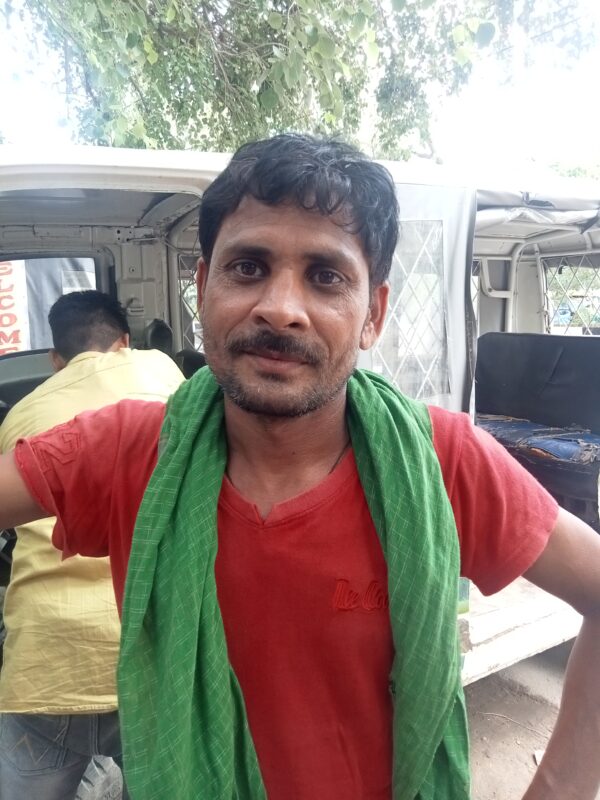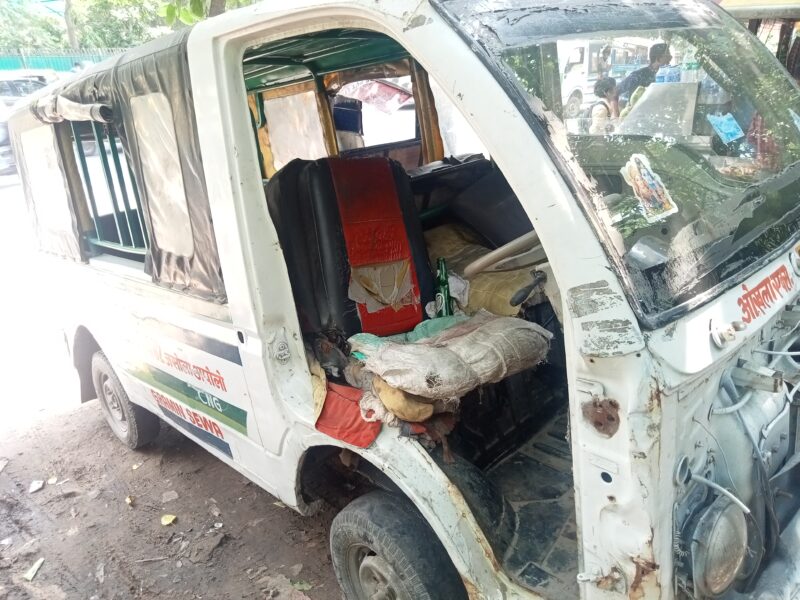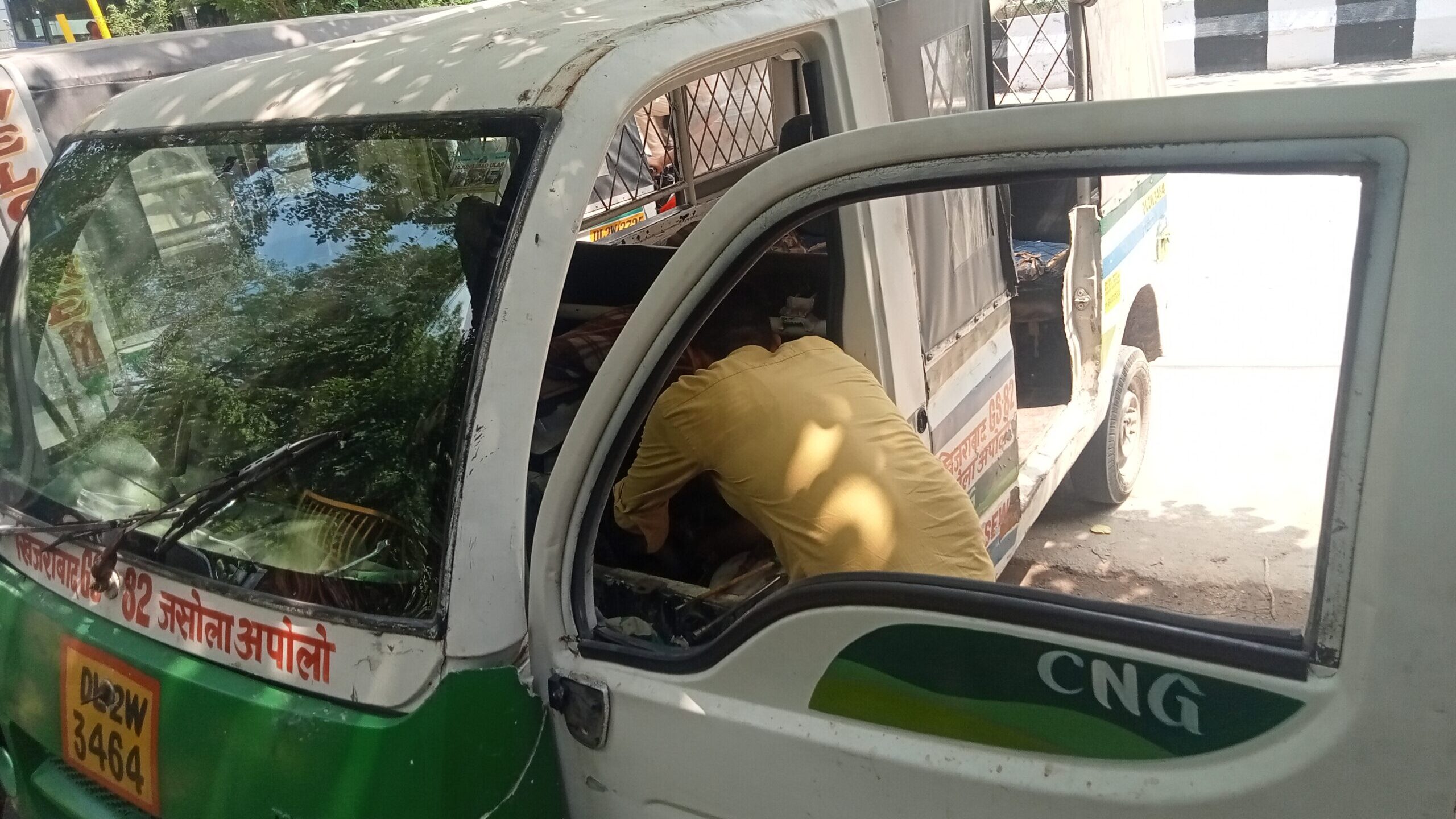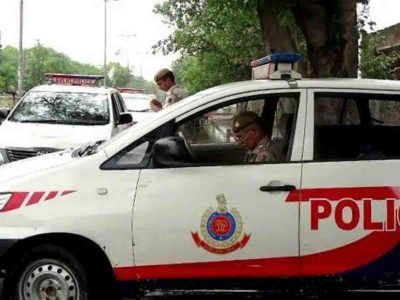A queue of Gramin Sewa autos waits for passengers near the traffic signal at Sarai Jullena. At one glance, it seems as if all the drivers are set to steal a customer from one another, but at a closer look, one comes to know that there is coordination among them – if you play smart and try to sit in an empty auto, they will direct you to the one that is yet to be filled.
Their “Kahan chalna hai?” (Where do you have to go?) often irritates the passers-by. However, the entreaties do not seem so annoying when one has to go somewhere since it is the cheapest mode of transportation.
Gramin Sewa autos were launched in 2010 to connect the rural areas on the outskirts of Delhi. The autos are often recognized by two horizontal stripes in green and blue and the mandatory inscription of “Gramin Seva.”
The fares of the autos are usually Rs 5 for the first 3 km, Rs 10 upto 7 km and Rs 15 above 7 km. This was revised in 2019 by the Delhi government, doubling the prices and the new scheme is Rs 10, Rs 20 and Rs 25 for respective kilometres.
With the rise in fuel prices, these auto drivers find it difficult to survive, since the increase in fares does not seem like a feasible solution to them. The autos attract the commuters for its cheap prices —the cheapest in the city along with DTC buses.
“The doubling of fares is not possible in this business. If we increase the prices, the passengers are going to fight with us”, says Dilshad Husain, a Gramin Sewa auto driver. Husain runs his auto in Okhla. He charges Rs 5 from Batla House to Shaheen Bagh, a distance of 4.1 km.

Speaking on the same line, RK Rana, another auto driver operating near Nehru Enclave metro station, says, “How will the customers give us more money if they don’t have money themselves? We don’t increase our prices because customers will not be able to pay.” Most of the passengers in these autos come from working-class backgrounds.
Owners usually charge Rs 600 per day to these auto drivers. With the cost of fuel prices and occasional maintenance of the vehicle, the drivers have nothing left in their pocket.
“Suppose, I earn Rs 1,500 a day, I will have to pay Rs 600 for the rent of this auto. And there is a maintenance cost that is usually Rs 100. And when I include the fuel prices, I am left with nothing”, explains Husain.
He says that he used to earn around Rs 800 – Rs 900 every day when the fuel prices were not so high. Now, he ends up earning Rs 300 – Rs 400, sometimes even failing to earn this much when the business is slow or the vehicle needs repair. “If the fuel prices keep rising like this, I will have to leave this business. Right now, I am surviving somehow”, he remarks. “The only solution is that the government lower the CNG prices”, he adds.
Gulshan Hussain, who worked with Blue Line buses before, says that the business is not worth the money he earns. “I used to work for Blue Line buses and it was an 8-hour duty, and then I could also live my life. In this business, sometimes we have to work 12 hours a day with nothing at the end. There is nothing in this business now”, he says. Apart from rising CNG prices, Hussain says, earning is limited as many people choose battery rickshaws for conveyance.
Explaining the economy of the situation, Ehsan Ahmad, Gramin Seva owner, says, “There is a huge rise in the rates of CNG in these 3-4 months. Suppose, if the rent of the vehicle is Rs 600 and the rate of the fuel remained the same as before, the driver as well as the owner could earn equally. The money that now goes to CNG could be split. Now, how do I increase the rent when the drivers are earning peanuts? There are times when the owner has to pay from his pocket to keep the business running.”

Sometimes, the drivers do not earn anything in their two-way trips, says Rana, because of the unavailability of the passengers. “There are times when the customers are not present and we have to make one-side trip without any passengers. We are running out of fuel anyway and this makes zero earning”, he says. Rana owns the vehicle that he rides from Nehru Enclave metro station to Dakshinpuri, a distance of 7-8 km.
“The government does not really care about drivers. Regardless of the party, the drivers have to suffer. I have been in the transportation business for the last 24 years, and I have never witnessed the condition of the drivers being so bad. Free electricity or free bus tickets do not help. If the government has to improve the living conditions, they have to keep a tab on the rising prices”, he adds.
Rana worked as an auto driver before switching to Gramin Sewa. The scorching heat adds insult to injury, “Sometimes we have to wait for 2-3 hours in this unbearable heat. The temperature remains as high as 45 – 46 degrees Celsius and we have to wait for passengers under the sun. If we don’t park the vehicle in the assigned area to protect ourselves from heat, the police charge us with a challan. If the earnings had been good, bearing such heat could have been reasonable. All this we have to do to eat daal-roti”, he says. Rana constantly appeals to the government to lower fuel prices during the interview.
Send comments to feedback@thepatriot.in
For more stories that cover the ongoings of Delhi NCR, follow us on:
Instagram: https://www.instagram.com/thepatriot_in/
Twitter: https://twitter.com/Patriot_Delhi
Facebook: https://www.facebook.com/Thepatriotnewsindia





